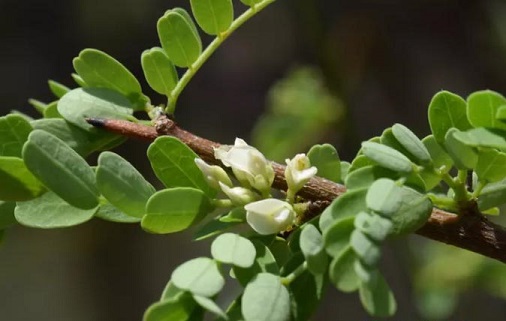Essential oil from Dalbergia Pinnata shows promise in treating Alzheimer's Disease
Nikhil Prasad Fact checked by:Thailand Medical News Team Jul 21, 2024 1 year, 5 months, 1 week, 3 days, 2 hours, 43 minutes ago
Herbs And Phytochemicals: Researchers from the Shanghai Institute of Technology have made a groundbreaking discovery that could revolutionize the treatment of Alzheimer’s disease (AD). Their study reveals that the essential oil derived from Dalbergia pinnata (Lour.) Prain, a traditional aromatic medicinal plant in China, can significantly improve cognitive functions and alleviate anxiety in AD patients. This
Herbs And Phytochemicals news report delves into the study's findings and implications for future Alzheimer's treatments.
 Essential oil from Dalbergia Pinnata shows promise in treating Alzheimer's Disease
Background on Alzheimer’s Disease
Essential oil from Dalbergia Pinnata shows promise in treating Alzheimer's Disease
Background on Alzheimer’s Disease
Alzheimer’s disease is a progressive neurodegenerative disorder that affects millions worldwide. It is characterized by memory loss, cognitive decline, and behavioral changes. The World Health Organization (WHO) predicts that by 2050, over 100 million people will be affected by this debilitating disease. Traditional treatments have had limited success, leading researchers to explore alternative therapies.
Dalbergia Pinnata: A Traditional Remedy
Dalbergia pinnata, known for its robust cellular repair capabilities, has been used in Chinese traditional medicine to treat various ailments, including traumatic injuries and respiratory issues. The essential oil from this plant, rich in the phytochemicals elemicin and methyl eugenol, has demonstrated potent antibacterial, antioxidant, and neuroprotective properties.
The Study: Methodology and Findings
-EEG Signal Analysis In Vivo
The research team conducted electroencephalography (EEG) signal analysis on 50 healthy volunteers (25 males and 25 females) to observe the effects of inhaling Dalbergia pinnata essential oil (DPEO). The study revealed that DPEO inhalation enhanced delta, theta, alpha, and beta wave powers in the brain, particularly in the frontal and parietal lobes. This enhancement was associated with improved relaxation, focus, and cognitive abilities.
-SH-SY5Y Cell Model In Vitro
In vitro experiments were conducted using SH-SY5Y human neuroblastoma cells to simulate Alzheimer's disease. The cells were exposed to amyloid-beta (Aβ1-42) to induce neurotoxicity, a hallmark of AD. Treatment with DPEO resulted in a significant reduction in Aβ levels and a decrease in markers of inflammation and oxidative stress.
-Network Pharmacology
Network pharmacology analysis identified potential pharmacological mechanisms involving the JAK-STAT pathway, suggesting that DPEO could modulate inflammatory responses and improve neuronal survival.
Detailed Findings
-Impact on Brainwave Activity
EEG analysis showed that inhalation of DPEO led to signif
icant increases in delta, theta, alpha, and beta waves in both male and female participants. The beta/alpha ratio, indicative of cognitive arousal, also increased, suggesting enhanced cognitive functions and reduced anxiety.
-Cell Viability and Morphology
In the SH-SY5Y cell model, DPEO treatment improved cell viability and restored normal cellular morphology. Cells treated with DPEO exhibited reduced shrinkage and debris compared to untreated cells exposed to Aβ1-42, indicating a protective effect against neurotoxicity.
-Protein Expression Levels
The study measured the expression levels of various AD-related proteins. DPEO treatment significantly reduced the levels of phosphorylated Tau (P-Tau), glycogen synthase kinase-3β (GSK-3β), amyloid-beta (Aβ1-42), cyclooxygenase-2 (COX-2), and pro-inflammatory cytokines (IL-1β, TNF-α, IL-6). Conversely, the levels of total Tau (T-Tau) increased, indicating a reduction in abnormal protein phosphorylation.
-Antioxidant Effects
DPEO enhanced the activity of superoxide dismutase (SOD), an enzyme critical for scavenging reactive oxygen species (ROS). This reduction in oxidative stress markers (OFR and HFR) highlights the antioxidant properties of DPEO, which may contribute to its neuroprotective effects.
-Inhibition of Cholinesterase Activity
The essential oil also inhibited the activity of acetylcholinesterase (AchE) and butyrylcholinesterase (BchE), enzymes involved in the breakdown of acetylcholine. This inhibition is crucial as decreased acetylcholine levels are linked to cognitive decline in AD patients.
Mechanisms of Action
The network pharmacology analysis suggested that DPEO might exert its effects through the JAK-STAT signaling pathway. This pathway is involved in cellular responses to cytokines and growth factors, playing a key role in inflammation and cell survival. By modulating this pathway, DPEO could help reduce inflammation and promote neuronal health.
Conclusion
The findings from this study indicate that Dalbergia pinnata essential oil has significant potential as a therapeutic agent for Alzheimer’s disease. Its ability to enhance brainwave activity, protect neuronal cells, reduce inflammation, and inhibit cholinesterase activity presents a multifaceted approach to combating AD.
The study was published in the peer-reviewed journal: Biology and highlights the promising future of aromatherapy and plant-based treatments in managing neurodegenerative diseases.
https://www.mdpi.com/2079-7737/13/7/544
For the latest on
Herbs And Phytochemicals, keep on logging to Thailand Medical News.
Read Also:
https://www.thailandmedical.news/news/herbs-and-phytochemicals-lotus-leaves-extract-could-help-against-amyloid-beta-induced-toxicity-in-alzheimer-s-disease
https://www.thailandmedical.news/news/herbs-and-phytochemicals-creeping-spinach-a-natural-ally-against-alzheimer-s
